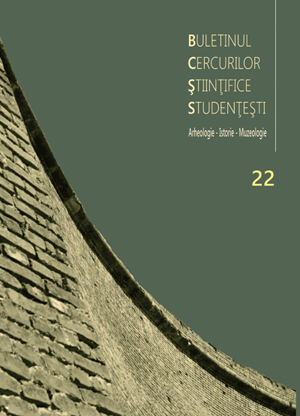Între memorie și venerare. Imaginea Sfintei Clara de Assisi în procesul de canonizare
BETWEEN MEMORY AND VENERATION. THE IMAGE OF ST CLARA OF ASSISI IN THE CANONIZATION PROCESS
Author(s): Cătălina-Tatiana CovaciuSubject(s): History, Middle Ages
Published by: Universitatea »1 Decembrie 1918« Alba Iulia
Keywords: Female sanctity; criteria of sainthood; inquest; testimonials; hagiographic topoi;
Summary/Abstract: In this paper, I intend to examine, from a conceptual and thematic point of view, the image of sanctity as reflected in the canonization process of Clare of Assisi (1193/4-1253, canonized in 1255) from two perspectives: how it was framed and what it comprised. In November 1255, during three days, there were recorded the depositions of 21 witnesses, in front of Bartolommeo Accorombani, bishop of Spoleto, and some other ecclesiastics. The canonization process was initiated by Pope Innocent IV, who called for an investigation of Clare’s life and personality, namely her vita (secular life), conversio (transition to the religious life), conversatio (life inside the community of nuns in San Damiano) and miracles, according to the interrogatoria established during the pontificate of Gregory IX.These are the issues addressed in the testimonials, in varying proportions, depending on the witnesses’ experience; the nuns in San Damiano preferably related to virtues, fasting or asceticism, while the lay, who had known Clare before her conversion, reported on that stage of her life. Beyond the required criteria, the inquisitors allowed themselves to adjust the talk as the investigation was progressing, bringing in new topics. Therefore, the ecclesiastic authorities mark the profile of Clare’s sanctity by setting out pre-established criteria of holiness, and also by discriminating some motives to be presented in detail. These latter were intended to illustrate a model promoted by the Holy See within the context of its confrontation with uncontrolled piety and heterodoxy.The current analysis has highlighted and sometimes even amended a number of studies concerning canonized sanctity, which bring into question the contribution of the investigators, respectively that of the witnesses, in elaborating the case for Clare’s canonization. Thereby, I have shown how the image of sainthood was constructed at the junction of Rome’s interests and the witnesses’ memories, reconfigured according to a pre-existing definition of holiness which is not imposed by the authorities, but is more a result of interiorizing the message of the Church. In other words, the particular case I have studied also reflects how believers related to a faultless, completely consecrated to God, filled with miracles life.
Journal: Buletinul Cercurilor Științifice Studențești
- Issue Year: 22/2016
- Issue No: 1
- Page Range: 83-115
- Page Count: 33
- Language: Romanian

